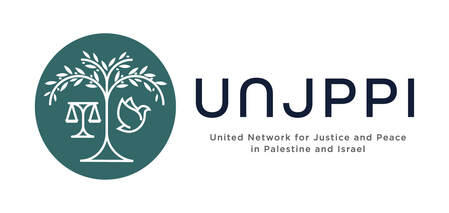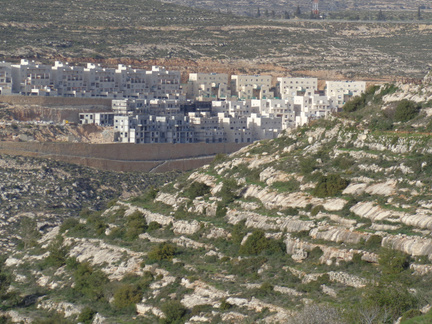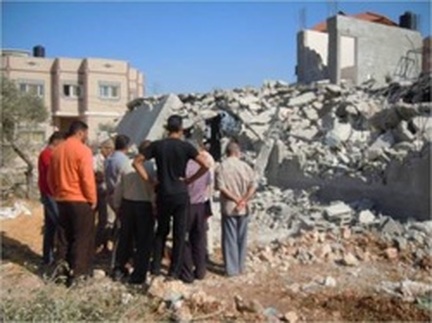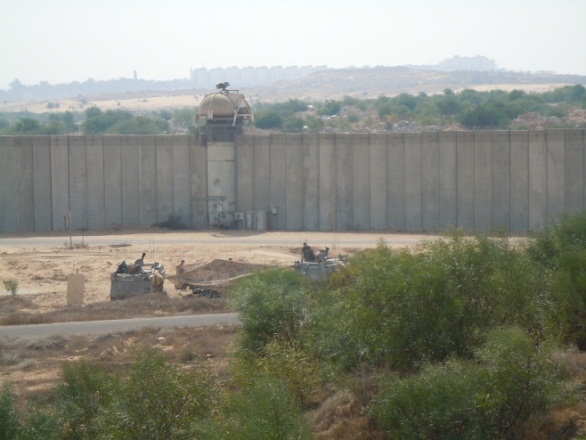What are the Issues?
Print this page...
Occupation
Since the creation of the state of Israel in 1948, the Israeli military has occupied Palestinian land and taken over Palestinian farms, homes and communities, creating a large number of refugees, many of whom are still in refugee camps.
Since the 6-day war against Egypt in 1969, Israel has occupied the area known as the West Bank, which includes East Jerusalem. The occupation is considered by the UN as illegal. Israel has not annexed the West Bank, but it has exercised a high degree of control over the land, water, property, social services and economic activity. It has created a huge wall/barrier around the West Bank, and in places the wall has been built inside the Green Line (border between the West Bank and Israel.) Demolition of Palestinian Houses.
Palestinian homes and communities are demolished to expand the settlements.
Water ResourcesWater Inequitable water distribution is another significant issue. While the average Palestinian level of water consumption is approximately 70L/day, well below the World Health Organization’s recommended 100 L/day (Thirsting for Justice, Palestinian rights to water and sanitation, http://www.thirstingforjustice.org), Israeli settlers in the West Bank consume approximately six times the water used by Palestinians in the West Bank.(UN OCHA Fact Sheet)
|
SettlementsSettlements and Settlers Israeli settlements are communities of Israeli citizens that are located in occupied Palestinian territory, in either the West Bank or in East Jerusalem, and settlers are the Israeli citizens who live in the settlements. During the occupation, (ie since 1967) “with the political, military and financial support of the Israeli government, settlers have built settlements in the occupied Palestinian territory. These lands were seized or expropriated from Palestinians by military orders….The settlements were recognized by the Israeli Ministry of Interior even though they are illegal under international law ” ( pg 39, A Basic Background Resource to the Current Context of Israel and Palestine: an Historical, Political and Human Rights Review, EAPPI 2010)
As settlement growth continues, there is mounting concern about the increasing fragmentation of the West Bank. In particular, plans to add 3000 housing units, located east of East Jerusalem, are raising particular concerns. The primary north south access route between the north and south West Bank passes through this area. The settlement take more and more Palestinian resources and create more and more hardship for the Palestinian people. See A Mosaic for Peace http://amosaicforpeace.wordpress.com/author/amosaicforpeace Check PointsCheck Points Approximately 540 internal checkpoints, roadblocks and other physical obstacles impede Palestinian movement within the West Bank; these obstacles exist primarily to protect settlers and facilitate their movement, including to and from Israel.” (UN OCHA Fact Sheet) These obstacles take up considerable time out of a Palestinian’s day when things run smoothly, can totally impede Palestinian movement when things are not running smoothly, can be a health hazard when Palestinians are stopped at checkpoints from pursuing medical treatment, and are a source of ongoing frustration for Palestinians as they attempt to go about their daily affairs.
Unequal Application of Law
Settler violence, apparent settler impunity, and the unequal application of law, creates other serious problems. The failure to respect international law, along with the lack of adequate law enforcement vis-à-vis settler violence and takeover of land has led to a state of (settler) impunity, which encourages further violence and undermines the physical security and livelihoods of Palestinians. Those (Palestinians) demonstrating against settlement expansion or access restrictions imposed for the benefit of settlements (including the Barrier) are regularly subject to arrest or injury by Israeli forces.” (UN OCHA Fact Sheet)
|



